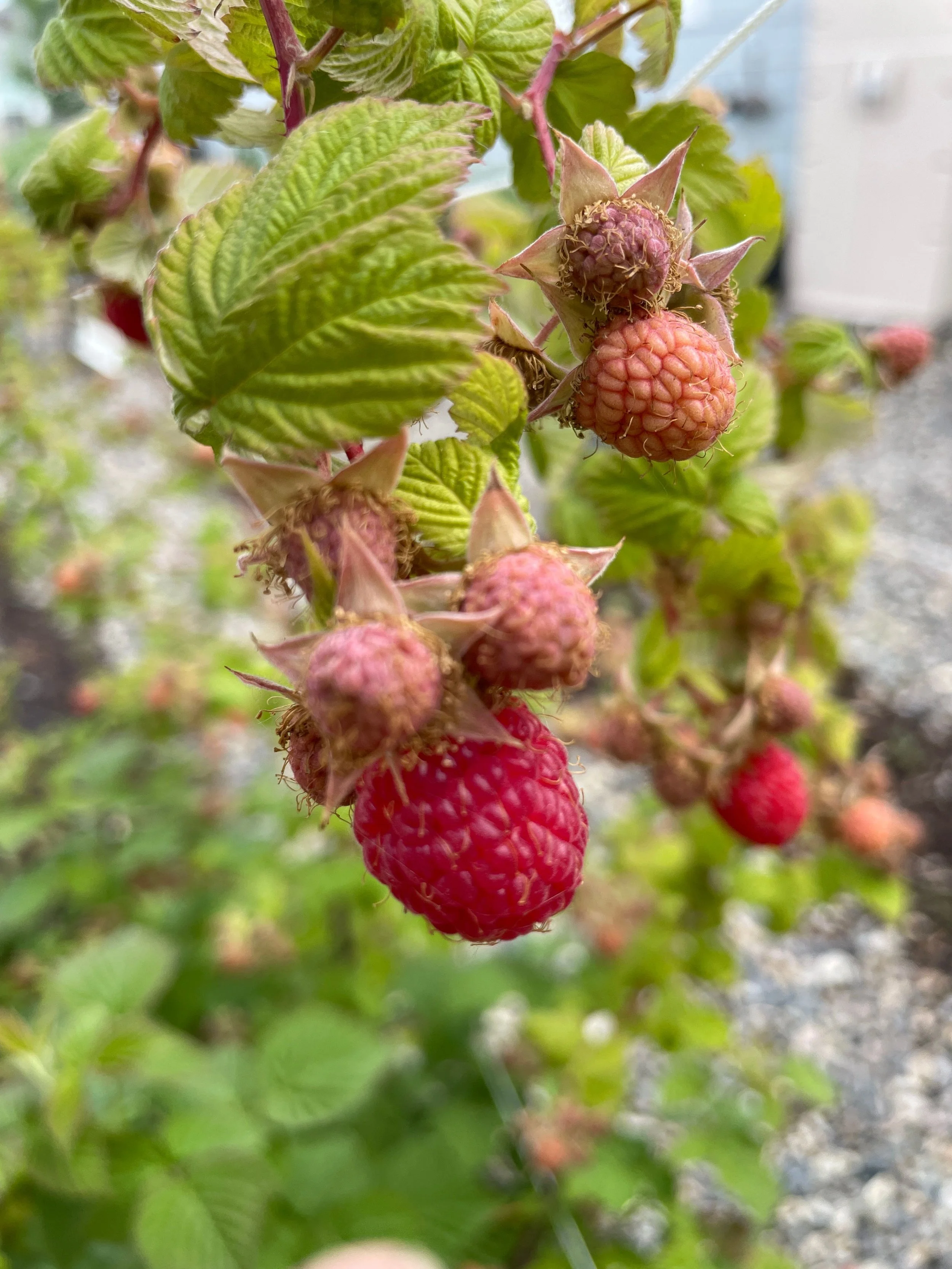When planning a garden, the plants I like best are half wild. If left on their own these species quickly turn feral, like tabby cats or pinto ponies. They resist cultivation whenever possible, preferring the open range to the well-ordered plot.
Tomatoes and roses have their champions, certainly, and there are those who favor the planting of beans, irises, potatoes, apple trees, rhododenrons and sugar maples. My grandfather loved his cucumbers.
My preference is the Rubus strigosus, the red bramble, the wild American raspberry.
Growing raspberries is like raising reindeer or taming mustangs. Fenced in or not, the species still hears the calll of the wild, and given the opportunity it will follow.
Raspberries flourish on their own throughout the Northwest. I've seen them along roads, at the edges of farmers' fields, and deep in the backcountry. They grow best on slightly sloping, sunny hillsides.
As a child, my first harvest memories are of raspberries. I recall carrying jars of the precious red fruit to the kitchen where my mother was canning jam and watching her stir them into a molten mixture on the stove. Just the memory of its smell makes my mouth water.
The raspberries I picked grew in a great tangled hedge near grandfather's rows of cucumbers. They rise tall as trees in my pre-school recollections . The summery fragrance of ripe berries on the vine, the satisfying feel of the fruit coming loose with a gentle tug of the fingers, and the distinctive taste of a firm berry crushed between my teeth all rushes back to me as I'm planting canes on new ground this spring.
Raspberries grow in a surprising variety of shapes and sizes, from the tart purple Brandywine to the yellow everbearing Golden Harvest. This year I've put down the summer-bearing Newburgh, the thornless Canby and the ever-popular old standy, Heritage.
I plant them a foot deep, or so, and sprinkle some bone meal where their roots meet the soil. Spaced about three feet apart, I arrange them in rows from which they with sucker out and spread.
Canes rising from the ground this year will likely bear fruit next summer. Everbearing varieties produce fruit on their year-old canes as well, but they also give berries in the fall from the tops of new canes. Each foot of raspberries in a row is worth about a quart of fruit at harvest.
Eating raspberries has been known to cure colds, clear complexions, increase virility (worked for me), stimulate hair growth (worked for me), and heighten vigor. You can't find a tastier source of magnesium, calcium, iron, phosphorous, and vitamins B and C.
Picking raspberries benefits body and soul similarly, probably because no matter how disciplined the picker it is impossible to resist now and again slipping a berry, surreptitiously, into the mouth.
